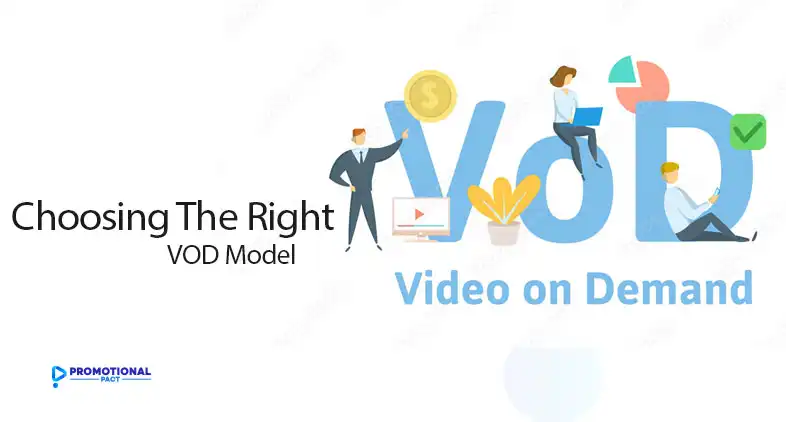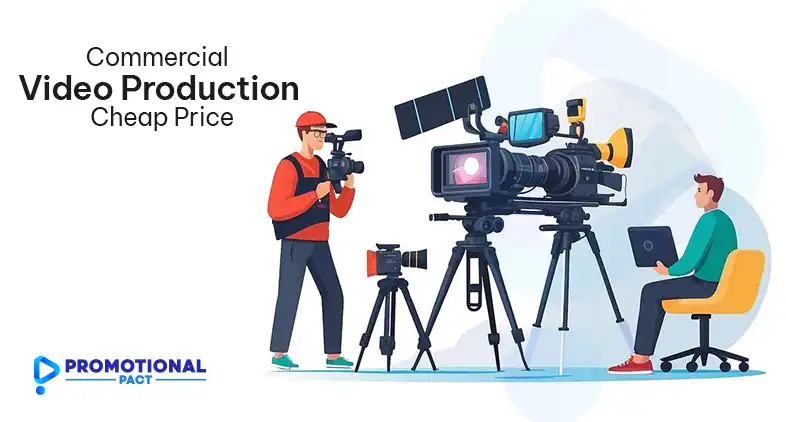
Video-on-Demand (VOD) has been reshaping how businesses approach content distribution and advertising for quite a while now. This article discusses the four primary VOD models – SVOD, TVOD, AVOD, and HVOD – with a focus on their advertising potential. We’ll explore which model might be the best fit for your advertising strategy, providing practical insights and actionable recommendations along the way.
Introduction to Video-on-Demand (VOD) Business Models
Video-on-Demand has revolutionized the way we consume media, offering viewers the freedom to watch content at their convenience. This shift has opened up new avenues for businesses to reach and engage with their target audiences. Before we dive into the specifics of each model, let’s briefly examine the VOD market landscape.
The global VOD market size was valued at $71.2 billion in 2021 and is projected to reach $257.3 billion by 2029, growing at a CAGR of 14.3%. This explosive growth underscores the importance of understanding and leveraging the right VOD model for your advertising efforts.
SVOD (Subscription Video-on-Demand)
Subscription Video-on-Demand is perhaps the most well-known VOD model, popularized by giants like Netflix and Disney+. In this model, users pay a recurring fee to access a library of content.
From an advertising perspective, SVOD presents unique challenges and opportunities. While traditional ad placements are limited, there’s significant potential for brand integrations and partnerships. For instance, Netflix’s hit show “Stranger Things” featured prominent product placements for Eggo waffles, generating substantial buzz and sales for the brand.
Pros for advertisers:
- High user engagement and retention
- Rich user data for targeted campaigns
- Potential for creative brand integrations
Cons for advertisers:
- Limited traditional ad inventory
- Higher costs for partnerships and integrations
- Resistance from viewers who expect ad-free experiences
TVOD (Transactional Video-on-Demand)
TVOD operates on a pay-per-view model, where users purchase or rent individual pieces of content. Platforms like iTunes and Google Play are prime examples of this model.
For advertisers, TVOD offers opportunities for targeted pre-roll ads and promotional offers tied to specific content. For example, a sports equipment brand might advertise before a newly released sports documentary.
Pros for advertisers:
- Highly targeted advertising based on content selection
- Lower ad fatigue due to less frequent exposure
- Opportunity for impulse-driven conversions
Cons for advertisers:
- Limited frequency of ad exposure
- Smaller user base compared to other models
- Potential for users to skip ads on downloaded content
AVOD (Advertising-based Video-on-Demand)
AVOD platforms, such as YouTube and Tubi, offer free content to users in exchange for watching advertisements. This model provides the most straightforward approach to video advertising.
AVOD platforms typically offer a variety of ad formats, including pre-roll, mid-roll, and post-roll ads, as well as banner ads and overlay ads. The key to success in AVOD advertising is creating engaging, relevant content that doesn’t disrupt the viewing experience.
Pros for advertisers:
- Large audience reach
- Various ad formats and placements
- Lower cost of entry compared to other models
Cons for advertisers:
- Ad fatigue and potential for ad-blocking
- Lower user engagement compared to paid models
- Shorter viewing sessions may limit ad exposure
HVOD (Hybrid Video-on-Demand)
HVOD combines elements of multiple VOD models, typically offering both ad-supported and ad-free tiers. Platforms like Hulu and Peacock exemplify this approach.
For advertisers, HVOD presents a flexible environment that can cater to different campaign objectives. For instance, a brand could run traditional video ads on the ad-supported tier while also exploring deeper integrations with original content on the premium tier.
Pros for advertisers:
- Flexibility in targeting different user segments
- Opportunity for multi-tiered campaigns
- Access to both mass-market and premium audiences
Cons for advertisers:
- Complex campaign management across tiers
- Potential for user confusion about ad experiences
- Higher costs to fully leverage all available options
Comparative Analysis of VOD Models for Advertising
To better understand the differences between these VOD models and how it might affect advertisers, consider the following table:
| Feature | SVOD | TVOD | AVOD | HVOD |
| Business Model | Subscription-based | Pay-per-view | Free with ads | Tiered (free with ads + premium) |
| Revenue Source | Recurring subscriptions | Individual purchases/rentals | Advertising | Ads + subscriptions |
| Examples | Netflix, Disney+ | iTunes, Google Play | YouTube, Tubi | Hulu, Peacock |
| Audience Reach | High | Medium | Very High | High |
| User Engagement | Very High | Medium | Medium | High |
| Content Library | Large, often exclusive | Varied, includes new releases | Large, user-generated + licensed | Large, mix of exclusive and ad-supported |
| Ad Formats | Limited (mostly integrations) | Pre-roll, promotional offers | Pre-roll, mid-roll, post-roll, banner ads | Various, depending on tier |
| Targeting Capabilities | High (based on viewing habits) | Medium (based on content selection) | High (demographic + behavioral) | Very High (combines SVOD and AVOD data) |
| Cost for Advertisers | High (for integrations) | Medium | Low to Medium | Medium to High |
| Ad Frequency | Low | Low | High | Medium to High |
| Advertising Potential | Medium | Low to Medium | High | Very High |
| Data Collection | Extensive | Limited | Extensive | Very Extensive |
| User Ad Tolerance | Low | Medium | High | Medium to High |
As you can see, this table compares SVOD, TVOD, AVOD, and HVOD models across key features. SVOD offers high engagement but limited ad options. TVOD provides targeted but infrequent ad opportunities. AVOD boasts the highest reach and ad potential at lower costs. HVOD combines elements of others, offering diverse advertising options. Each model varies in revenue sources, audience reach, user engagement, ad formats, targeting capabilities, and data collection. The choice depends on advertisers’ goals, budget, and target audience preferences.
Choosing the Right VOD Model for Advertising
When choosing a VOD model for advertising, consider these key factors:
Revenue Potential: AVOD and HVOD typically offer the highest revenue potential due to their broad reach and diverse ad inventory. A successful AVOD campaign can generate significant returns, with CPMs (Cost Per Mille) ranging from $10 to $30 depending on targeting and placement.
User Engagement: SVOD leads in terms of user engagement, with subscribers spending an average of 2 hours per day on these platforms. This deep engagement can translate to more impactful brand integrations and partnerships.
Data Collection and Targeting: All VOD models offer valuable user data, but SVOD and HVOD often provide the most detailed insights due to their subscription models. This data can be leveraged for highly targeted advertising campaigns.
Ad Format Flexibility: AVOD and HVOD offer the most flexibility in terms of ad formats, allowing for traditional video ads, interactive ads, and even shoppable video content.
Factors to Consider When Choosing a VOD Model for Advertising
- Target Audience Demographics: Consider where your target audience spends their time. Younger audiences might be more prevalent on AVOD platforms like YouTube, while older demographics might prefer SVOD services.
- Content Type and Genre: Align your brand with the right content. For example, a luxury brand might find more success with premium SVOD or HVOD platforms that offer high-quality original content.
- Budget and Resources: AVOD typically offers the lowest barrier to entry, with campaigns starting from as little as $10 per day on platforms like YouTube. SVOD partnerships, on the other hand, can run into millions of dollars for significant integrations.
- Competition in the Market: Analyze where your competitors are advertising and consider whether you want to compete directly or find untapped opportunities in other VOD models.
Bottom Line
Choosing the right VOD model for your advertising strategy requires careful consideration of your brand goals, target audience, and resources. While AVOD offers the most straightforward path to video advertising, don’t overlook the potential of creative integrations in SVOD, targeted campaigns in TVOD, or the flexibility of HVOD.
Remember, the most successful VOD advertising strategies often involve a mix of approaches. Consider starting with AVOD to test and refine your messaging, then expand into other models as you gather data and increase your budget.

